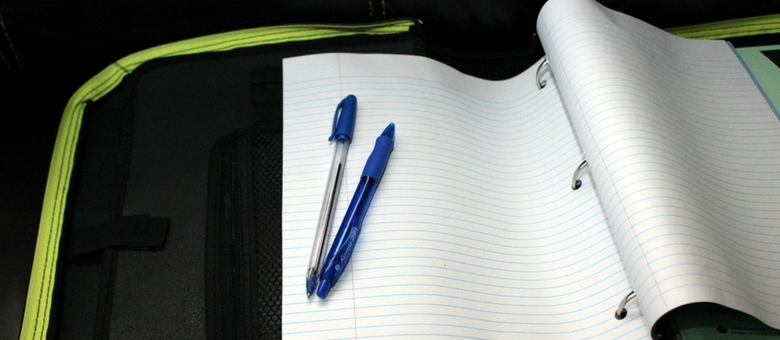Consider this familiar scenario. The start of the school year is just behind us. The list of supplies again called for a high stack of 3-ring binders (notebooks) and tabs to organize each of them. If you are new to Dayspring, or even if you aren’t, you might sigh, shake your head, and wonder, “Why so many notebooks?”. Why can’t we just get folders? Or those little spiral notebooks? What is a homework notebook? How is that different from a subject notebook? Why do I need to buy one hundred tabs? So many rules!
Welcome to Dayspring. And welcome to the Principle Approach!
Dayspring Christian Academy is unique among Christian schools because the standards we keep go beyond the traditional. The Principle Approach is a method of education, using the subjects as vehicles to behold God’s glory! One of the ways it accomplishes this lofty goal is by using the Notebook Method.
What is the Notebook Method?
The Foundation for Christian Education’s (FACE) website outlines the Notebook Method this way: “The Principle Approach method of education is the manner of consistent and ordered teaching and learning that produces Christian character and self-government, Christian scholarship and Biblical reasoning for lifelong learning and discipleship.”

The Notebook Method assists parents and teachers in overseeing progress and visually demonstrates the character development, diligence, and responsibility of the student.
The notebook method is an essential component to the Principle Approach that governs the teacher and student in their participation in each subject. It establishes a consistent tool and standard of Christian scholarship. The learners are producers as they build their own daily record of a subject, taking ownership of the learning process. The notebook method embraces the four steps of learning: research, reason, relate, and record. It aids in the Biblical purposes of education by “enlightening the understanding, correcting the temper, and forming the habits of youth that fit him for usefulness in his future station” (excerpted from the Webster’s 1828 Dictionary definition of education). The notebook method is the product of the student’s creativity and a permanent record of his productivity. It assists parents and teachers in overseeing progress and visually demonstrates the character development, diligence, and responsibility of the student.
Traditional schools employ methods that often involve regurgitation of learning with the end goal of test mastery. After the test is over, there is very little, if any, record of learning. The Notebook Method is in keeping with the Principle Approach’s philosophy of “consistent and ordered teaching and productivity.” When a child is finished with a subject, he has a complete record of what he has learned, and has a visual representation of his accomplishments.
What are the benefits of the Notebook Method?
Again, the Foundation for Christian Education’s website offers the benefits of the Notebook Method:
* The curriculum is structured by Biblical principles and leading ideas. It glorifies God as the Author of the subject.
* The Notebook produces a permanent record of learning. The student values his labor and is able to refer back to his study. Parents see what is being taught, required, and can supervise the child’s progress.
* The Notebook produces reflective understanding. Essay tests require an understanding of principles and concepts. Students reason for themselves and solve problems.
* The Notebook produces philomaths—people who love and pursue a lifetime of learning.
* The burden of learning rests on the student, not on the teacher!
So how does the Notebook Method work? And…what exactly is the difference between a Homework Notebook and a Subject Notebook?
Think of the Homework Notebook as the record of current learning. It houses all of the work a student is working on currently, as well as communication between home and school. The Homework Notebook should have a tab for each subject, as well as a Homework tab and a Home Communication tab. Some teachers will also include a Parent Review tab, which contains work that is finished and meant to “show off” to the parent. Students who wish to keep their Homework Notebooks electronically must still have a notebook to house hard copies. Electronic Notebooks must be orderly, with separate folders for each subject. The same principles of the Notebook Method apply to electronically kept notebooks!
Subject Notebooks are the permanent record of learning spoken about in FACE’s description. When students are finished with a unit of study, they remove the finished work from the Homework Notebook and file it into the proper tabs in the Subject Notebook. Upper School students have the choice to use one Subject Notebook per subject, or use larger notebooks that hold several subjects. The key is not to file work into the Subject Notebook before it is graded and finished. By the end of the year, a properly filed Subject Notebook is a treasure trove of learning to be kept by the student for further referral or simply to keep as a memento of his accomplishment.
The Notebook Method is a method of scholars. It is counterintuitive to today’s culture of quick returns, instant information, and learning at the surface. It takes discipline and work ethic. But in the end, it is well worth the time and effort. Set aside shelves in your home for your child’s notebooks. Watch his library grow year after year, knowing that from graduation and beyond, he will have a permanent record of his education at Dayspring. This is infinitely valuable, as each Notebook will chronicle your child’s growing “in the grace and knowledge of our Lord and Savior Jesus Christ” in order to give Him “the glory both now and to the day of eternity.” (2 Peter 3:18)


